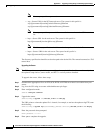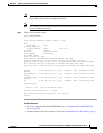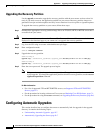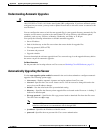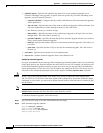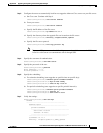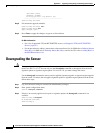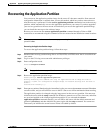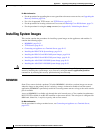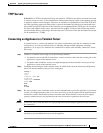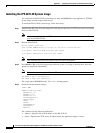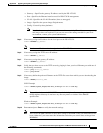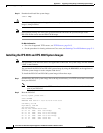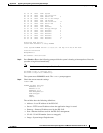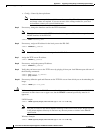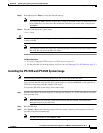
D-12
Cisco Intrusion Prevention System Appliance and Module Installation Guide for IPS 7.1
OL-24002-01
Appendix D Upgrading, Downgrading, and Installing System Images
Installing System Images
For More Information
•
For the procedure for upgrading the recovery partition to the most recent version, see Upgrading the
Recovery Partition, page D-6.
•
For a list of supported TFTP servers, see TFTP Servers, page D-13.
•
For the procedure for locating software on Cisco.com, see Obtaining Cisco IPS Software, page C-1.
•
For the procedure for using the setup command, see Appendix B, “Initializing the Sensor.”
Installing System Images
This section contains the procedures for installing system images on the appliances and modules. It
contains the following topics:
•
ROMMON, page D-12
•
TFTP Servers, page D-13
•
Connecting an Appliance to a Terminal Server, page D-13
•
Installing the IPS 4270-20 System Image, page D-14
•
Installing the IPS 4345 and IPS 4360 System Images, page D-16
•
Installing the IPS 4510 and IPS 4520 System Image, page D-19
•
Installing the ASA 5500-X IPS SSP System Image, page D-21
•
Installing the ASA 5585-X IPS SSP System Image, page D-23
Caution
All user configuration settings are lost when you install the system image. Before trying to recover the
sensor by installing the system image, try to recover by using the recover application-partition
command or by selecting the recovery partition during sensor bootup.
ROMMON
Some Cisco sensors include a preboot CLI called ROMMON, which lets you boot images on sensors
where the image on the primary device is missing, corrupt, or otherwise unable to boot the normal
application. ROMMON is particularly useful for recovering remote sensors as long as the serial console
port is available.
Access to ROMMON is available only through the serial console port, a Cisco-standard asynchronous
RS-232C DTE available in an RJ-45F connector on the sensor chassis. The serial port is configured for
9600 baud, 8 data bits, 1 stop bit, no parity, and no flow control.
For More Information
For the procedure for using a terminal server, see Connecting an Appliance to a Terminal Server,
page D-13.



